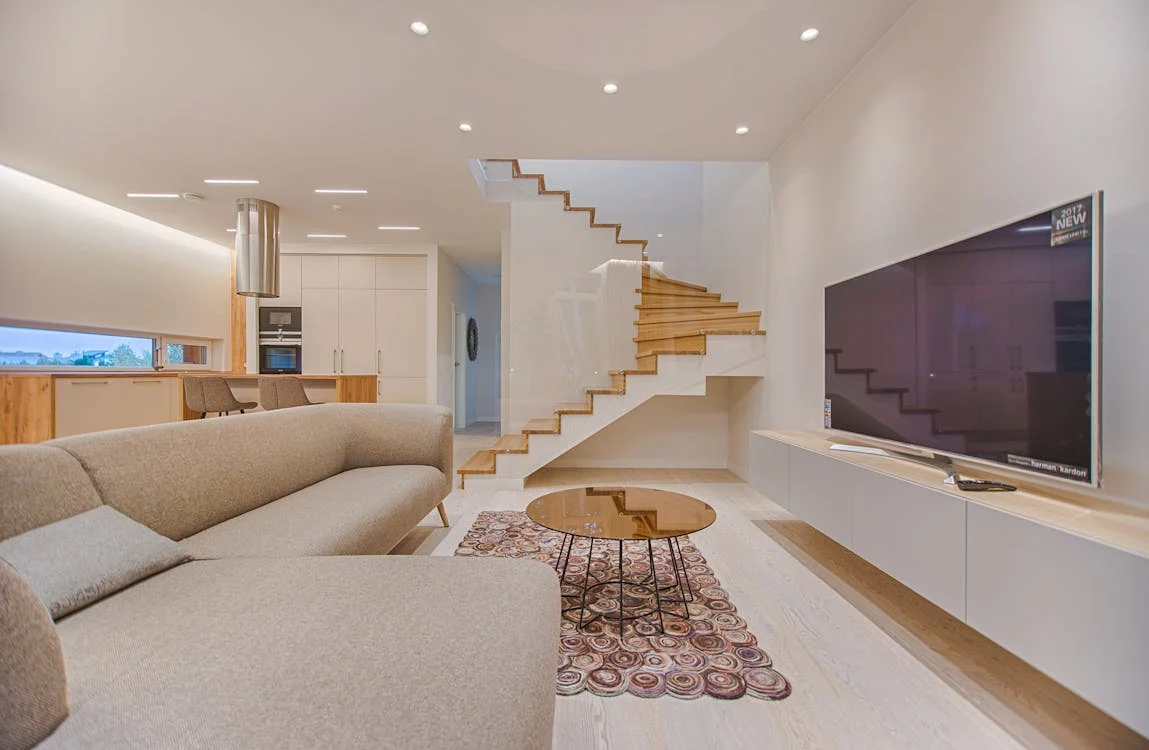Introduction to Luxury Interior Design
In a world where aesthetics and comfort meet, luxuryinteriored.org stands as a beacon for those seeking to transform their living spaces into havens of elegance and sophistication. This platform is dedicated to providing insights and resources on high-end interior design, aiming to inspire and guide you in creating enviable luxury spaces. Whether you’re a seasoned designer or a homeowner looking to infuse a touch of opulence into your abode, understanding the nuances of luxury interior design is paramount.
High-quality interior design plays a crucial role in luxury spaces, not only enhancing the visual appeal but also elevating the overall experience of living in such environments. The art of luxury interior design lies in the meticulous attention to detail and the seamless blend of aesthetics with functionality. From lavish penthouses to serene countryside retreats, the essence of luxury is captured through thoughtful design choices that cater to the desires and lifestyles of those who inhabit these spaces.
Understanding Luxury Interior Design
What Defines Luxury in Interior Design?
Luxury in interior design transcends mere opulence. It is about creating an ambiance that exudes elegance and comfort while reflecting the personality and taste of the individual. Key elements of luxury design include the use of premium materials, bespoke furniture, and unique decor pieces that tell a story. Customization is often at the heart of luxury, allowing each space to be tailored to perfection.
Key Elements of a Luxurious Space
The foundation of a luxurious interior lies in its elements. From plush textiles to exquisite lighting fixtures, every component plays a significant role in crafting a high-end environment. Rich textures, such as velvet and silk, add depth and sophistication, while statement pieces, like grand chandeliers, serve as focal points that draw the eye. Additionally, incorporating art and antiques can lend a timeless quality to a space, enhancing its luxurious appeal.
The Role of Functionality in Luxury Design
While aesthetics are crucial, functionality must not be overlooked in luxury design. The true mark of a successful luxury interior is its ability to blend beauty with practicality. This involves considering the layout and flow of space, ensuring that each area serves a purpose while maintaining elegance. High-end design emphasizes comfort and convenience, integrating smart home technologies and ergonomic solutions to enhance the living experience.
Trends in Luxury Interior Design
Current and Emerging Trends
Luxury interior design is constantly evolving, with trends reflecting the changing tastes and lifestyles of consumers. Currently, there is a strong emphasis on creating personalized spaces that offer a sense of exclusivity. This trend is evident in the rise of custom-made furniture and bespoke design solutions. Additionally, there’s a growing interest in incorporating natural elements, such as wood and stone, to bring a sense of tranquility and connection to nature.
The Impact of Technology on Luxury Living Spaces
Technology has become an integral part of luxury living, transforming how spaces are designed and experienced. From smart lighting systems to automated climate control, technology enhances comfort and convenience while adding a futuristic edge to interiors. Virtual reality and augmented reality are also making their mark, allowing designers and homeowners to visualize and experiment with design concepts before implementation.
Sustainable and Eco-Friendly Options
Sustainability is no longer just a buzzword; it is a fundamental aspect of modern luxury design. Eco-friendly materials and practices are being embraced by designers and homeowners alike, who seek to create environmentally conscious spaces without compromising on style. From reclaimed wood to energy-efficient appliances, sustainable design choices are paving the way for a greener future in luxury interiors.
Case Studies of Notable Luxury Interiors
Showcase of Renowned Luxury Interiors
Exploring renowned luxury interiors provides valuable insights into the art of creating exceptional spaces. Iconic examples include the minimalist elegance of contemporary penthouses and the timeless charm of classic estates. Each case study highlights unique design choices that set these spaces apart, from the strategic use of color and texture to the incorporation of bespoke elements that reflect the owner’s personality.
Analysis of Design Choices
In-depth analysis of these notable interiors reveals the thought processes behind design decisions. Attention to detail, balance of form and function, and the integration of art and culture are common themes that elevate these spaces. By studying these elements, readers can gain a deeper understanding of how luxury interiors are crafted to evoke emotion and admiration.

Tips for Achieving Luxury in Your Own Space
Affordable Ways to Add a Touch of Luxury
Achieving a luxurious look doesn’t have to break the bank. Simple yet effective strategies can transform a space into a high-end retreat. Consider updating textiles, such as drapes and cushions, with rich fabrics like velvet or silk. Incorporate statement pieces, such as a unique coffee table or a piece of art, to add character and sophistication. Additionally, decluttering and organizing can create a sense of spaciousness that is synonymous with luxury.
Advice on Selecting High-Quality Materials and Furnishings
Investing in quality materials and furnishings is key to achieving a luxurious aesthetic. Opt for timeless pieces that will stand the test of time, both in terms of style and durability. When selecting materials, consider those that offer both beauty and practicality, such as marble countertops or hardwood flooring. These choices not only enhance the visual appeal but also add value to your space.
Importance of Lighting
Lighting plays a pivotal role in creating a luxurious atmosphere. It has the power to transform a room, highlighting architectural features and setting the mood. Layered lighting, which includes ambient, task, and accent lighting, is essential for achieving a balanced and inviting ambiance. Chandeliers and pendant lights can serve as stunning focal points, while dimmers allow for versatility and control over the intensity of light, enhancing the overall perception of luxury.
Conclusion
Luxury interior design is an art form that combines aesthetics, functionality, and personalization to create spaces that inspire and captivate. By understanding the principles of luxury design and staying informed about the latest trends, anyone can elevate their living spaces to new heights. Whether you’re seeking to add a touch of opulence to your home or embarking on a complete transformation, luxuryinteriored.org is your go-to resource for expert advice and inspiration.


























